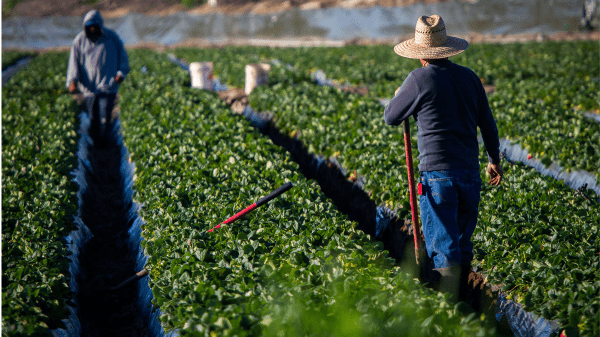As the coronavirus begins to move into the past, the nation is still evaluating its impact.
There was great concern that the pandemic would lead to severe farm labor shortages, causing growers to leave crops unharvested.
Fortunately, that problem didn’t pan out, as we learn from a report issued by USDA’s Economic Research Service (ERS) in August 2022.
“Fears of COVID-19-induced farm labor shortages in the summer and fall of 2020 appear to have been unfounded,” the report concluded. “There were no widespread reports of shortages, and U.S. Department of Agriculture (USDA) data on fresh fruit and vegetable show that 2020 total shipments were similar to 2019, although up for some commodities and down for others.”

Nevertheless, the report went on to say, “there were some reports of farm workers having lower earnings in 2020 because of fewer hours offered due to reduced demand for fresh produce from restaurants and foodservice firms.”
Following a long-term trend, use of the program continued to grow. The number of jobs certified to be filled under the H-2A program “increased from around 75,000 in FY 2010 to around 275,000 in FY 2020,” the report said. The figure was up by 7 percent from 2019’s figure of approximately 257,700.
Around 80 percent of H-2A certified jobs result in visas issued to workers. The fact that employers do not always follow through on applications and some H-2A workers fill more than one job accounts for the difference.
Individual employers (mostly large ones) account for only 49 percent of the jobs, the report also pointed out. The rest were supplied by farm labor contractors (FLCs) and growers’ associations acting as employers.
“Six States accounted for 55 percent of H-2A jobs certified: Florida (14 percent), Georgia (10 percent), Washington (10 percent), California (9 percent), North Carolina (8 percent), and Louisiana (4 percent), the report said.
Reports of this kind present an interesting challenge. There is the ostensible story, set out in prose, tables, and maps, but there is usually another story that remains to be teased out.
For example: a map on page 13 of the report reflects the share of jobs in each state that are filled by H-2A workers.
Of course, California, Texas, and Florida all account for a large number of H-2A jobs. But as a percentage of total farm jobs, we see quite a different picture.
“There is a positive relationship between the total hired agricultural labor force in a state and the size of its H-2A labor force,” says the report, “but this relationship is far from perfect. For example, Georgia and North Carolina have fewer farmworkers than Texas but hire many more H-2A workers.”
H-2A workers account for more than 20 percent of jobs in Louisiana, Nevada, Georgia, and the Carolinas, and 15-20 percent in Florida.
But they account for fewer than 5 percent of agricultural jobs in California and Texas, and 10-15 percent in Arizona.
If you look at this map with the naked eye, one fact stands out: the states where H-2A employment is proportionately the highest are ones that do not share a border with Mexico.
Can we conclude that it is harder for illegal immigrants to make it to more remote states, and that as a result growers there must turn to the H-2A program as a last resort?



